ONE DAY GARAGE FLOORS VS. HYBRID GARAGE FLOORS
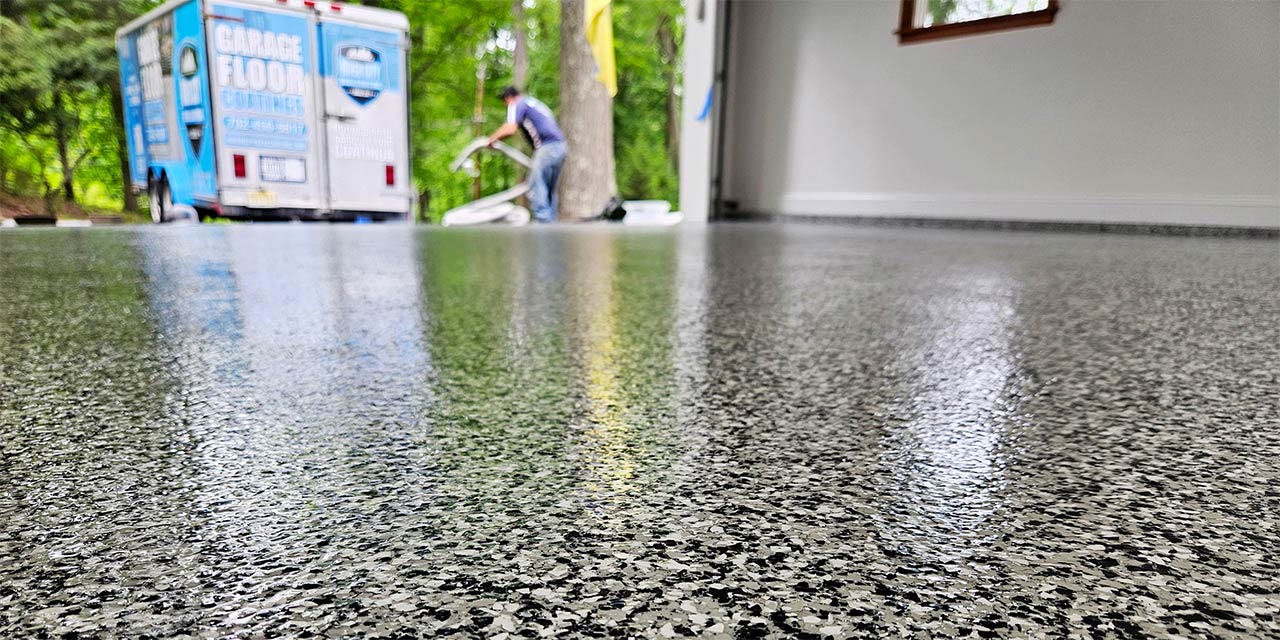
Over the course of time, garage floor coatings, specifically the captivating full flake broadcast floor variant, have firmly established their presence. Recent times have borne witness to an upsurge in their popularity, driven by homeowners increasingly recognizing the manifold advantages of coated floors compared to the raw canvas of bare concrete. This escalating demand for coated garage floors has unsurprisingly led to a proliferation of companies entering the arena, keen to meet this newfound interest.
A notable trend among these emerging companies is the provision of one-day garage floor solutions. The promise of reduced disruption, both in terms of worker presence within your home and the need to temporarily relocate your possessions, as well as a shorter interval for your vehicles to be stationed elsewhere, is indeed enticing.
Adding to the allure, these companies assert their superiority over traditional epoxy floors. Claims range from a fourfold boost in product strength to truly impressive assertions of being twenty times more robust. The enticement is further enhanced by substantial warranties, spanning a generous 15 years and in some cases, extending to a lifetime commitment.
Yet, as we navigate this exciting avenue of upgrading your garage, it’s prudent to cast a discerning eye on potential considerations that may await. What are the facets that warrant careful thought against these appealing promises? How do these claims align with real-world outcomes? Our exploration will shed light on a comprehensive spectrum of insights, empowering you to make the most informed decision regarding your enhanced garage floor.
Understanding The Materials
In order to compare a one-day floor system to a more traditional system, you first need to understand the materials that comprise them. Epoxy is a chemical compound typically made up of resin and hardener, that when combined, cures into a durable hard coating and is typically associated with traditional garage floor coatings. Polyureas and polyaspartics, the materials used for one-day floor systems, are chemical compounds that were created by modifying traditional urethanes. They are typically made up of two components like epoxies, however, they have a much quicker cure time. This is what makes a one-day floor installation possible. They are also UV resistant and offer better abrasion resistance. Does that mean they are the better floor system? I’d venture that this is the wrong question ask. A better question would be “Who does this type of floor system benefit more, the contractor or the homeowner?”
Who Benefits The Most?
Contractors benefit from only mobilizing to a job site once. And if a job can be completed in a day, workers can be on another job the following day. This increases earning potential and profits.
So obviously there are some benefits for the company installing one-day garage floors. The debate here isn’t about what is best for the contractor. The debate isn’t even about which material is better. The one-day floor companies often make claims that their products are twenty times stronger, however, there is no evidence to back this up. They also claim their system is better because it is done in a day and is more convenient for the homeowner. But these are just marketing tactics. Are they really claiming that these are the best garage floor systems available for their clients? Or are they just promoting the system they use? I would venture that the entire epoxy / polyaspartic debate is a straw man argument.
Many, if not most companies installing garage floor systems utilizing epoxies, aren’t using epoxies for top coats. Instead, they are using them for base coat material directly applied to the concrete and serving as the bonding agent for the flakes. Once cured, the flakes are then top coated with a polyaspartic material just like the one-day floor guys. This material has all the benefits mentioned earlier, particularly UV resistance and abrasion resistance. It has a fast cure time which allows a quicker return to service. These floors are often referred to as hybrid floors. The one-day floor guys don’t talk about hybrid floors because it negates much of their argument about why their products are better. If a hybrid floor takes longer to install and is more costly, why would companies choose that system over a one-day system? There are several contributing factors here that we will take a look at, but all of them add up to a belief that a hybrid system is a better system long term for both the client and the contractor, not just the contractor
Why A Hybrid Floor System?
Probably the biggest driving thought process behind using epoxy as a base coat in a hybrid system is that it bonds better to the concrete surface. Slower cure times for epoxies allow them to wick into a properly prepared concrete surface better than faster curing polyureas or polyaspartics. If a material isn’t bonded properly to the surface, then its strength and other attributes won’t matter over time. Eventually, it will fail.
We’ve been asked to remove plenty of floors that were peeling off the concrete and never fully bonded. Some of these were cheap box store products, or DIY jobs, and failures are par for the course. You can read more about that here. We have also removed professional-grade materials where the coating didn’t bond properly to the substrate.
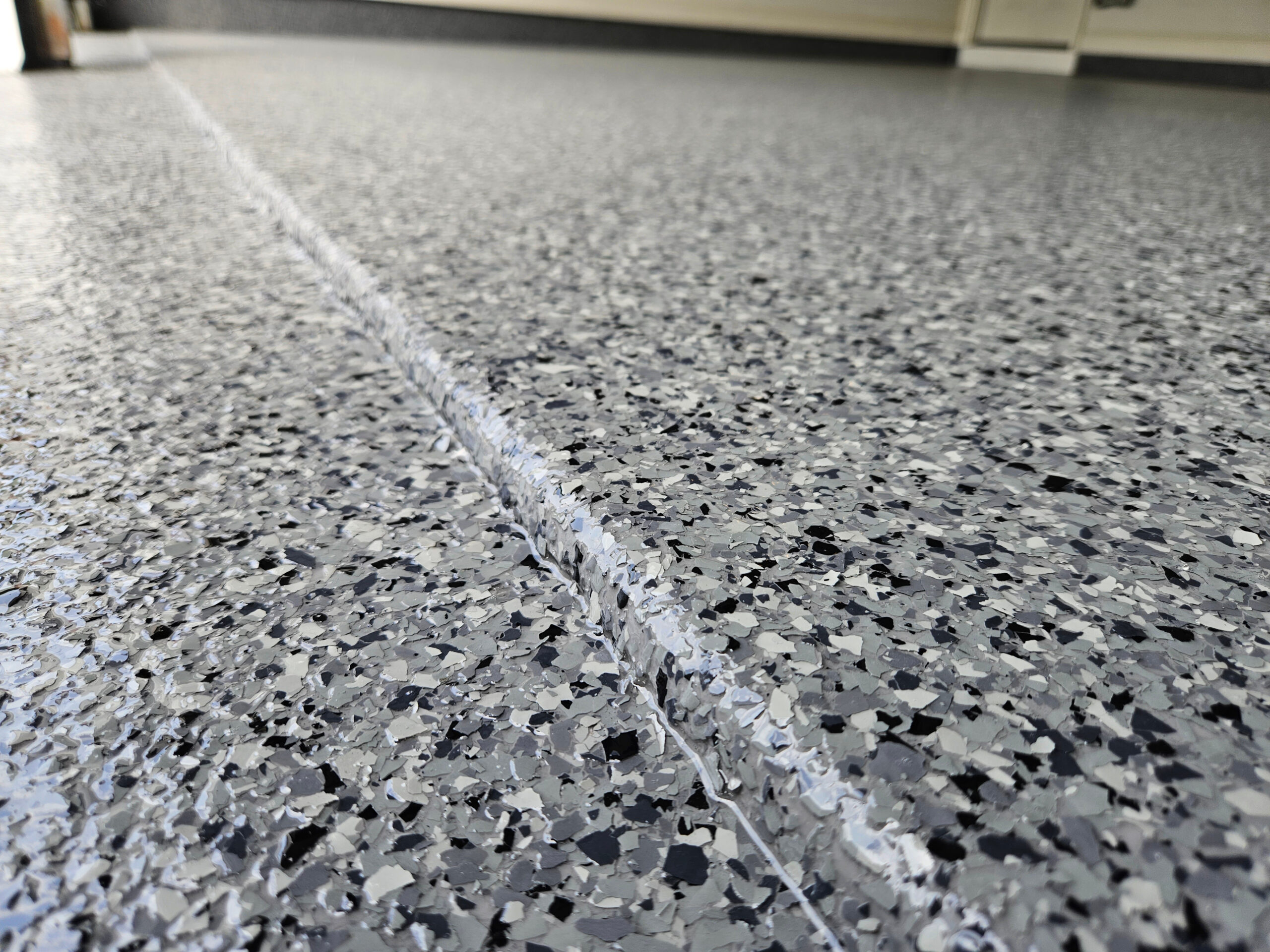
Floor Failures
A floor failure is major a problem for any reputable coating company. It not only leaves a bad taste in the client’s mouth, but they are costly and time-consuming to fix. As technology and materials advance, the risk of failures can be minimized. But in this industry, there are so many factors that come into play, that there is no way to eliminate them entirely.
Many of these factors are scientific involving temperature, humidity, dew point, the composition of the concrete, and how the materials being applied react under different variations of all of those. As you can imagine, there are too many scenarios to count. On top of this, there is the human factor. Anyone who has been in this industry for a while can recall a job where materials were mixed incorrectly. Someone forgot one of the components or added the wrong amount causing the material not to cure properly. In fluid-applied flooring, it is a worst-case scenario. Much can be done to minimize these risks, but they will never be removed completely.
In addition to these risks, there are a few other known factors that cause floors to fail. Ignoring these means you are simply rolling the dice hoping for a good result. Sadly, this is what many of the one-day floor companies do on a regular basis.
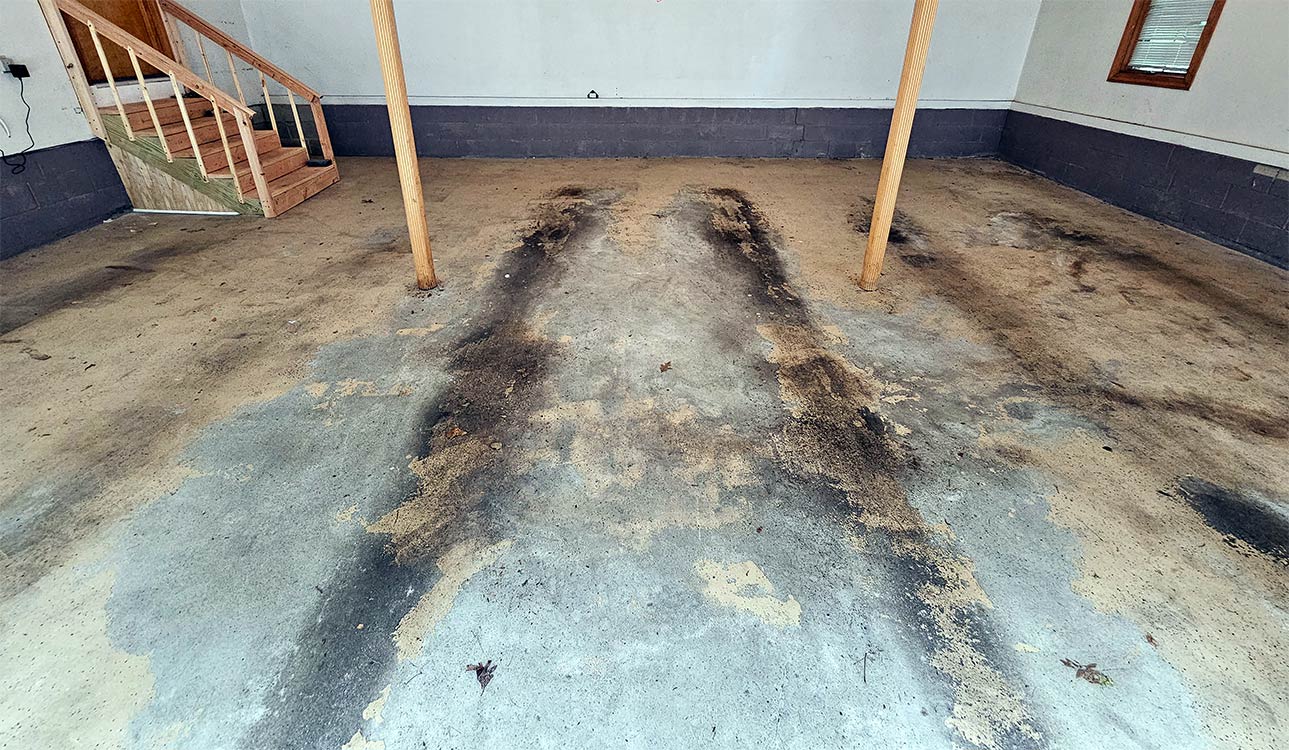
Improper Surface Preparation
When it comes to fluid-applied flooring the concrete substrates have to be prepared. This is the process of removing contaminates on the surfaces, as well as creating a concrete surface profile or CSP. This is a standardized measure for the ‘roughness’ of a surface that is defined by the International Concrete Repair Institute (ICRI). The CSP has a corresponding number that indicates how smooth or rough the concrete has to be for different materials to bond properly.
Fluid-applied floors almost always require a CSP3. This is only produced through grinding or shot blasting. Since shot blasting equipment is extremely expensive, most companies use concrete grinders. They are typically cheaper and more versatile, as they can also be used for polishing concrete. The downside to grinding concrete is when it is extremely hard or uneven.
When concrete is uneven, the diamonds used to grind it only hit the high spots. This leaves the low spots untouched. Since the goal of the process is to remove the weaker cream from the surface along with contaminates, while creating the required profile, any low spots that are missed are potentials for failure. The solution is to continue grinding or to hand grind these spots until the entire surface is at a CSP3. This can be a time-consuming process, especially if the concrete is extremely hard.
When you consider that treating cracks, spalls, and divots is also part of surface preparation and that this is just the first step of many involved in installing a garage floor coating, it makes you wonder how the one-day floor guys get it all done. My guess is that corners are often cut. I’ve seen plenty of pictures of one-day floor companies showing off prepped floors where none of the low spots are profiled at all. Does this mean that the floor is going to fail? Certainly not, but it could. Does it mean the floor has a higher chance of failing over one where the entire substrate was profiled correctly? Absolutely!
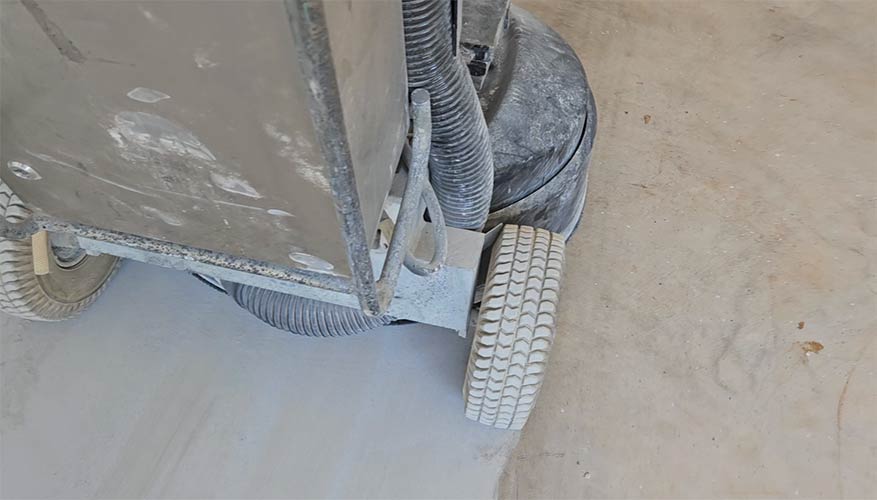
Moisture Vapor Transmission
Another common factor in floor coating failures is moisture. Concrete is porous and when a solid coating is applied it can trap moisture vapor passing through the concrete. If not treated, this vapor can accumulate under the coating and literally push it off the concrete. Bubbles form and ultimately the coating will fail. The Northeast can be a wet climate many months of the year. Moisture vapor is always a concern with coatings. This is particularly true for older homes where often the concrete was installed without a vapor barrier under it. It can also be problematic in newer homes. If groundwater changes direction a problem can appear where there was never one before.
The products used in one-day floor systems don’t account for moisture issues. While some companies may offer a moisture system, it would add a day to the job making it a two-day system. With hybrid floor systems, a moisture mitigation product can be used under the base coat, or as the base coat with some brands of material, providing protection from failures due to moisture. In fact, with hybrid floor systems, there are many materials that can be used as a base depending on the environment it is being installed. For example, if thermal shock is a concern, urethane cement can be used. Hybrid floors can be designed with specific factors in mind providing performance that goes well beyond a speedy install.
Our Process
Step 1: Surface Grinding & Preparation
We use a 900lb surface grinder to grind the concrete top 1/16″ surface level to remove stains, imperfections, and other raised areas caused by our structural repair material. Our smaller grinders work together with the larger grinder to grind down all the hard-to-reach and corner angles. Once dustless grinding is complete, our high-powered vacuum removes the debris left over from the grinders and ensures a smooth surface ready for repairs and the primer coating.
Step 2: Repair Cracks, Spalls & Other Surface Damage
Once the concrete “whitecap” has been exposed, we’ll begin any necessary repairs on surface cracks, spalled & pitted areas, low spots, and other surface blemishes and imperfections using our two-part polyurea crackfill material. The material starts out as a thin, water-like substance that’s designed to wick and penetrate deep into the surface of the concrete. Within minutes, the material will begin to harden, fuse the repairs together, and be ready for our final pass with the 7″ surface grinder to level the area flush with the rest of the concrete.
Step 3: Apply Epoxy Primer, Epoxy Intermediate Coat & Decorative Flake Selection
Once the prep work has been completed and the concrete surface exposed, we apply a 93% solids epoxy primer coat, followed immediately by a 100% solid, high-build intermediate coat. The primer coat is designed to wick deep into the concrete surface and “fuse” the base layer together, giving a much stronger coating for the intermediate and flake to live on. This is what separates us from the rest of the companies using only a thin, polyaspartic material as their one and only base coat.
Step 4: Apply Slow Cure, High Build Polyaspartic Topcoat
The final step involves returning the next day and applying our signature polyaspartic topcoat. We use a slow cure high solids polyaspartic. The reason for this is twofold. Lower solids products have to be applied thinner and they don’t coat the porous surface of the flakes as well. This can result in a top coat that has too much texture. It will hold dirt and be difficult to clean. It can also result in a blotchy surface that isn’t even and doesn’t look very good.
The other problem with these products is the working time. The one-day floor companies typically use fast-cure materials to get everything done in a day. This isn’t a problem most of the time, but in cases of high humidity or high temperatures, the working time can be drastically reduced making the installation extremely difficult and sometimes impossible.
Even the most well-trained installers can struggle when the material working time drops to a few minutes. This can result in the material being pulled too thin in the base coat. When this happens, fewer flakes will stick. And while this isn’t always visible, it can be, and it means the coating is thinner and less durable in that spot. If the material is pulled too thin on the top coat, the surface will be very rough making it difficult to clean and visually the surface will look uneven. In some cases, the material can thicken, making it difficult to spread. This results in heavier spots that appear glossy on the surface. Sadly we see all of these fairly often.
Final Thoughts
As coating installers, there are plenty of projects that we have done where a fast install was required. These jobs are typically for businesses where the downtime of being closed outweighs the downsides of using quick-cure materials. We have coated food processing plants on weekends and done jobs for restaurants at night where employees would be arriving in the morning and the floor had to be dry. Fast-cure coatings make sense in these situations. Spending an extra day on a garage floor coating to make sure it not only looks great but will perform without fail for years to come, is definitely worth the extra time.
We have installed hybrid garage floors with the same system for the last 10+ years without issue. Most of the companies offering lifetime warranties haven’t even been installing floors for that long. And some of the materials they are using haven’t even been around that long. If you are considering a garage floor coating or any other type of fluid-applied flooring, we would love to talk with you about your project.
TAKE ADVANTAGE OF OUR DRIVEWAY SEALCOATING & GARAGE FLOOR COATING BUNDLE

Services
Driveway Sealcoating
Garage Floor Coating
Asphalt Maintenance
Commercial Flooring
Corporate Office
11262 Kilmer Rd
Edison, NJ 08872
Phone
NJ (732-524-7757
VA (804) 234-3180
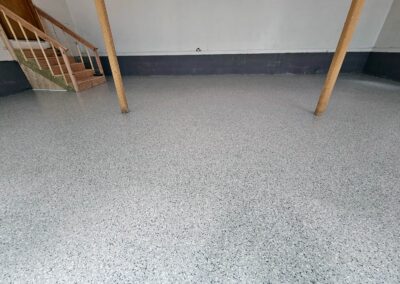
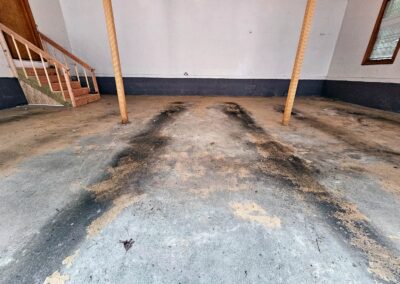
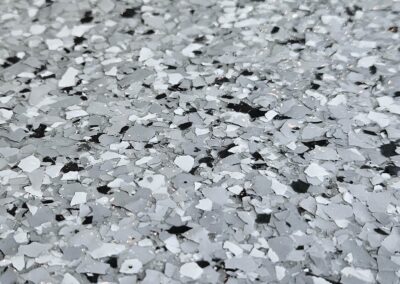
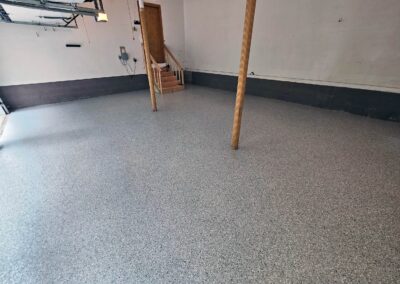
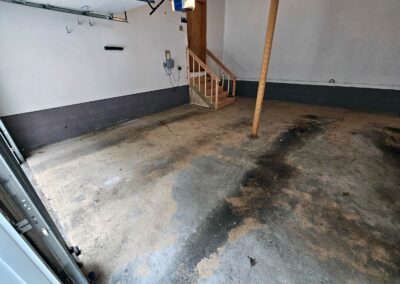
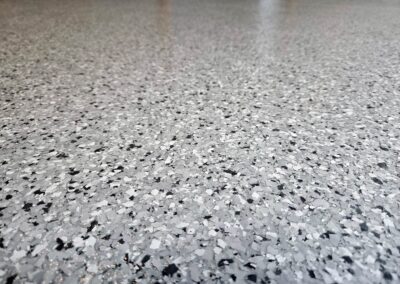
Recent Comments